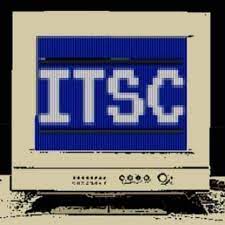
 Each Labor Day, the cost of IT labor invariably becomes a topic of discussion. After all, even in the age of artificial intelligence (AI), the single biggest segment of any IT budget remains staffing.
Each Labor Day, the cost of IT labor invariably becomes a topic of discussion. After all, even in the age of artificial intelligence (AI), the single biggest segment of any IT budget remains staffing.
The cost incurred depends greatly on the era in which the application being managed was originally built. Simply put, the older the application, the more costly it is to maintain. Despite this issue, organizations continue to run many applications long after their proverbial expiration date.
For example, a survey of 500 IT professionals in the U.S., conducted by Researchscape International on behalf of Saritasa, found that 62 percent of respondents are still managing some type of legacy platform. More than two-thirds of those respondents (68 percent) reported that these platforms are managed by an internal IT team. In comparison, 20 percent rely on a vendor, while 7 percent use an external services provider.
The hidden costs of clinging to outdated tech
The primary reasons cited for not replacing these systems include the fact that it still works (50 percent), followed by budget limitations (44 percent), fear of disrupting operations (38 percent), data migration concerns (35 percent), lack of internal support for modernization (30 percent) and lack of a clear return on investment (ROI).
Unfortunately, IT teams and business leaders are not always making decisions for the right reasons. Business leaders are often trying to contain costs by delaying upgrades even though that usually means higher security risks because legacy code tends to have more known vulnerabilities that might be exploited. IT teams, meanwhile, may have a vested interest in maintaining a legacy application rather than deploying a replacement that demands less specialized expertise. This shift could reduce the value of their skill set, meaning the team responsible for running the application might not command as high a salary as they do today.
Extending lifelines to aging systems: MSPs under pressure
Managed service providers (MSPs) can find themselves caught between two competing agendas. Most of them would rather support a business running modern application software that is generally going to be more secure and less expensive to maintain. However, the leadership of an organization might not have the financial resources required to replace an application. In many cases, they simply want the MSP to help them extend the life of the applications they have, usually by updating them to a more recent version.
In fact, the Saritasa survey noted the five biggest challenges encountered when managing legacy software:
- Security vulnerabilities (43 percent)
- Incompatibility with modern systems or tools (41 percent)
- Limited scalability (40 percent)
- High maintenance/support costs (39 percent)
- Lack of vendor support or updates (32 percent)
Older software tends to require more maintenance and support, which drives up costs for organizations. Because of this, IT professionals are always interested in assistance from MSPs to help reduce that burden. One key way MSPs can support organizations is by deploying the latest stable versions of applications to keep systems current and efficient.
According to the survey, the top goals identified by survey respondents when considering an application modernization initiative are:
- Improve performance or speed (48 percent)
- Cloud-based or remote access (45 percent)
- Greater scalability/flexibility (44 percent)
- Integration with modern tools (44 percent)
- Enhanced security (42 percent)
MSPs deliver more value than internal IT for legacy systems
MSPs are, arguably, always going to be better able to enable organizations to achieve those goals than an internal IT team. After all, they do it every day for multiple clients, compared to the average internal IT team that might update applications a couple of times a year. The challenge, as always, is getting organizations to recognize the value of that expertise when most of them still don’t appreciate the actual cost of running legacy applications long past their useful life.
Photo: PeopleImages-Yuri+A / Shutterstock
This post originally appeared on Smarter MSP.

